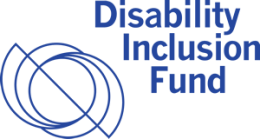Grant Funding


CDPAANYS is proud to have been selected as one of 15 Rapid Response grant recipients by Borealis Philanthropy’s Disability Inclusion Fund.
The Disability Inclusion Fund (DIF) is a $10M, 5-year Fund that supports U.S. groups run by and for disabled people to lead transformational change. This donor collaborative fund will be housed at Borealis Philanthropy.
The Fund is supported by the Presidents’ Council on Disability Inclusion in Philanthropy, which is comprised of foundation presidents who are committed to disability inclusion as part of improving diversity, equity, and inclusion within philanthropy.
Disability Inclusion Fund Objectives
- Strengthen the disability community/movement by building the power of representative organizations and elevating the voices of disabled people within public life.
- Boost the capacity of disability justice groups to fundraise, communicate a more unified narrative and other priorities as determined by the group’s advisors.
- Build bridges between disability justice groups to learn from one another, complement and strengthen advocacy and mobilizing approaches.
- Promote collaboration and partnership between disability-led organizations and “mainstream” organizations.
- Support disability inclusion in philanthropy with collaborative learning around programmatic and operational inclusion.
Disability Inclusion Fund Guiding Values
- Participation: Movement funding accountable to the disability rights movement. Those impacted by injustice/exclusion should be involved in strategies to advance justice/inclusion.
- Intersectionality: Disability is shaped by race, gender, class, gender expression, etc.
- Radical inclusion: Deeply committed to removing barriers and ensuring access so that those most affected by intersecting identities can participate, valuing lived experience.
- Leadership of those most impacted: Emphasis given to organizations led by disabled people of color, queer and gender nonconforming and women with disabilities.
- Cross-movement solidarity: Intentional focus on collaboration and bridge-building amongst disability justice activists and across movements
